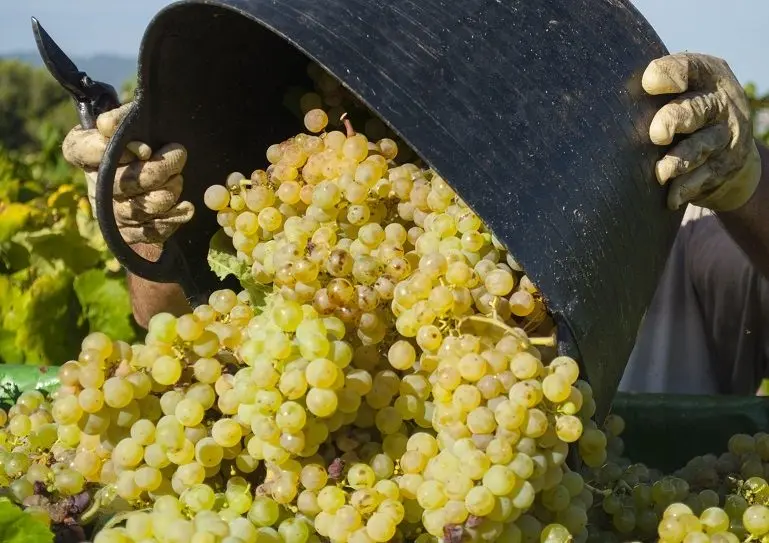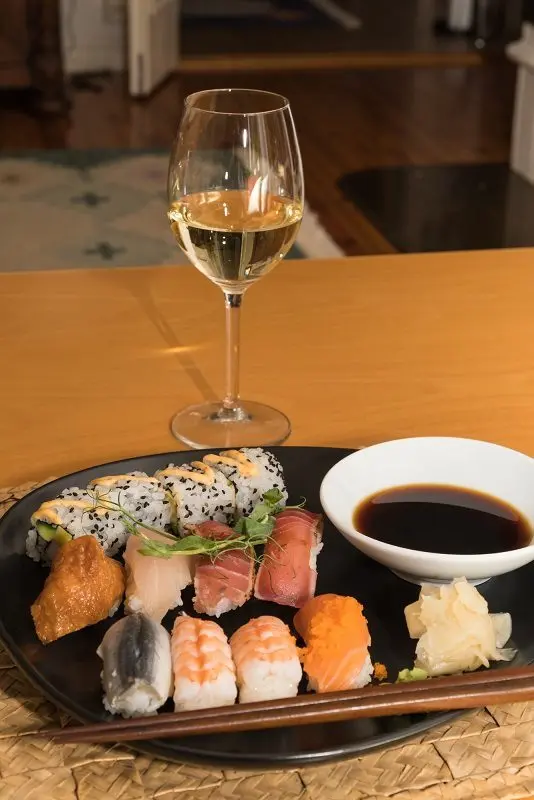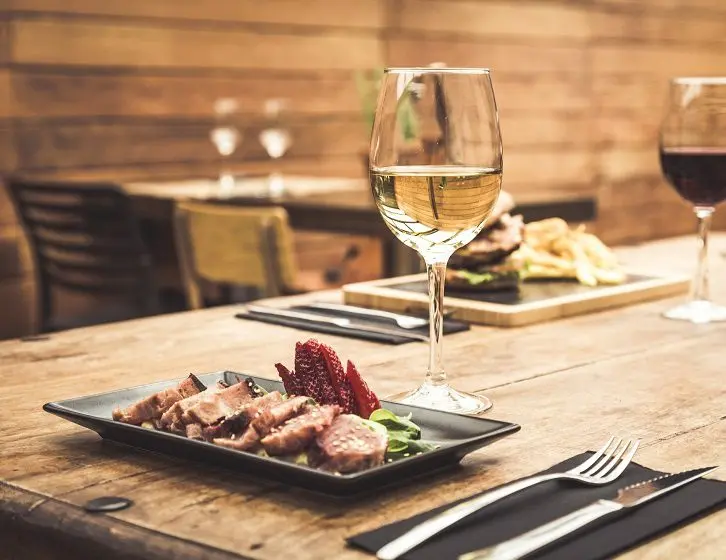Contents
Sauvignon Blanc is a white grape native to the French province of Bordeaux. Most likely, the name comes from the word sauvage – “wild”, – as the distant ancestor of the variety was wild grapes from the southwestern regions of the country. Oenologists believe that Sauvignon is related to Savagnin, which also grows in France. Soft green rounded berries produce a light, refreshing “summer” wine, in addition, the variety is used in blends with Sémillon grapes for the production of dessert wines, such as Sauternes.
“Wild white” grapes are cultivated not only in France, but also in Italy, Central Europe, Chile, Canada, Australia, New Zealand, South America, the US states of Washington and California. Sometimes New World wines from this variety are called Fume Blanc.
The first Friday of May is International White Sauvignon Day.
The history of the variety began in the west of France, in the Loire Valley and the Bordeaux region. It is not known for sure whether Savagnin was really the ancestor of the grape – there is a version that Sauvignon is related to the Carmenere family, and its “parents” were Traminer and Chenin Blanc. However, it is clear that the variety appeared in the XVIII-XIX centuries as a result of numerous mutations and crosses, and the first documented “publication” of the hybrid took place in the 1880s, when the vine was brought to California.

Climate and taste
White Sauvignon sets late, but ripens early, the grape likes a warm but not hot climate. At too high a temperature, the berries quickly overripe and lose most of the flavor.
Depending on the climate, the bouquet is dominated by either herbal or sweet-tropical notes. In cooler regions, the wine turns out fresh, you can feel the tones of green bell pepper, passion fruit, elderberry, gooseberry. In warm weather, the aroma becomes sweet and exotic, but it is very important not to overexpose the grapes – only light notes of grapefruit and peach remain in overripe berries.

Features of wine production technology
Harvest Sauvignon Blanc is not harvested immediately, but gradually, at irregular intervals, in order to obtain berries of varying degrees of maturity and, accordingly, wine of different tastes. There is no single established technology, the winemaker himself decides how to carry out each stage. For example, when it is necessary to separate the must (grape must) from the skins, whether to bottle young wine, or let it “ripen” in oak barrels or stainless steel containers.
The conditions of fermentation (fermentation) also depend on the manufacturer: in France, this process occurs at 16-18 degrees, in the New World the temperature may be lower.
How to drink Sauvignon Blanc wine
Wine experts describe this variety and the resulting drink with the epithet “elegant”. Wine Sauvignon Blanc is one of the few types of alcohol that goes well with sushi. It also makes a good gastronomic pair with fish, cheese, seafood, white meat.

Sauvignon Blanc is not usually aged for a long time, as aging is not good for it: tones of peas and asparagus appear in the bouquet. However, there are exceptions to any rule, some winemakers, on the contrary, skillfully beat the mature notes of the drink, getting a good and original wine, for example, Pouilly-Fume and Sancerre.
Wine regions
France
In its historic homeland, Sauvignon Blanc is cultivated in the maritime climate of Bordeaux and the continental climate of the Loire Valley. Due to the peculiarities of these regions, the berries do not ripen too quickly, managing to gain the right balance of acidity and sugar.
The terroir is very important: from the grapes grown on marl soils, a complex wine with a rich bouquet is obtained, while the chalk rocks give the drink a more delicate and aromatic taste. Gravel adds spicy, floral and mineral notes to the bouquet, while silica brightens the aroma and provides a long aftertaste. Finally, sandstone gives the grapes smoky, “powder” tones.

Australia
Wine Sauvignon Blanc can be made from both the grape variety of the same name, and from a blend of Sauvignon Blanc with Semillion. In this drink, the tones of white peach and lime are clearly felt.
Chile and Brazil
In these countries, pure Sauvignon has low acidity, and the taste is closest to the French variations.
New Zealand
New Zealand White Sauvignon entered the international market in the 1990s. Due to its climatic diversity, this country offers a full line of wines, ranging from herbaceous and spicy, made from late harvest, to rich tropical, from early ripened berries.
North America
The state of California is considered the main wine region of North America producing Sauvignon Blanc. Local berries are distinguished by an overly rich, “aggressive” aroma, which is smoothed out by aging in oak barrels. Notes of tropical fruits, citrus, passion fruit, melon are felt in Californian wine.









